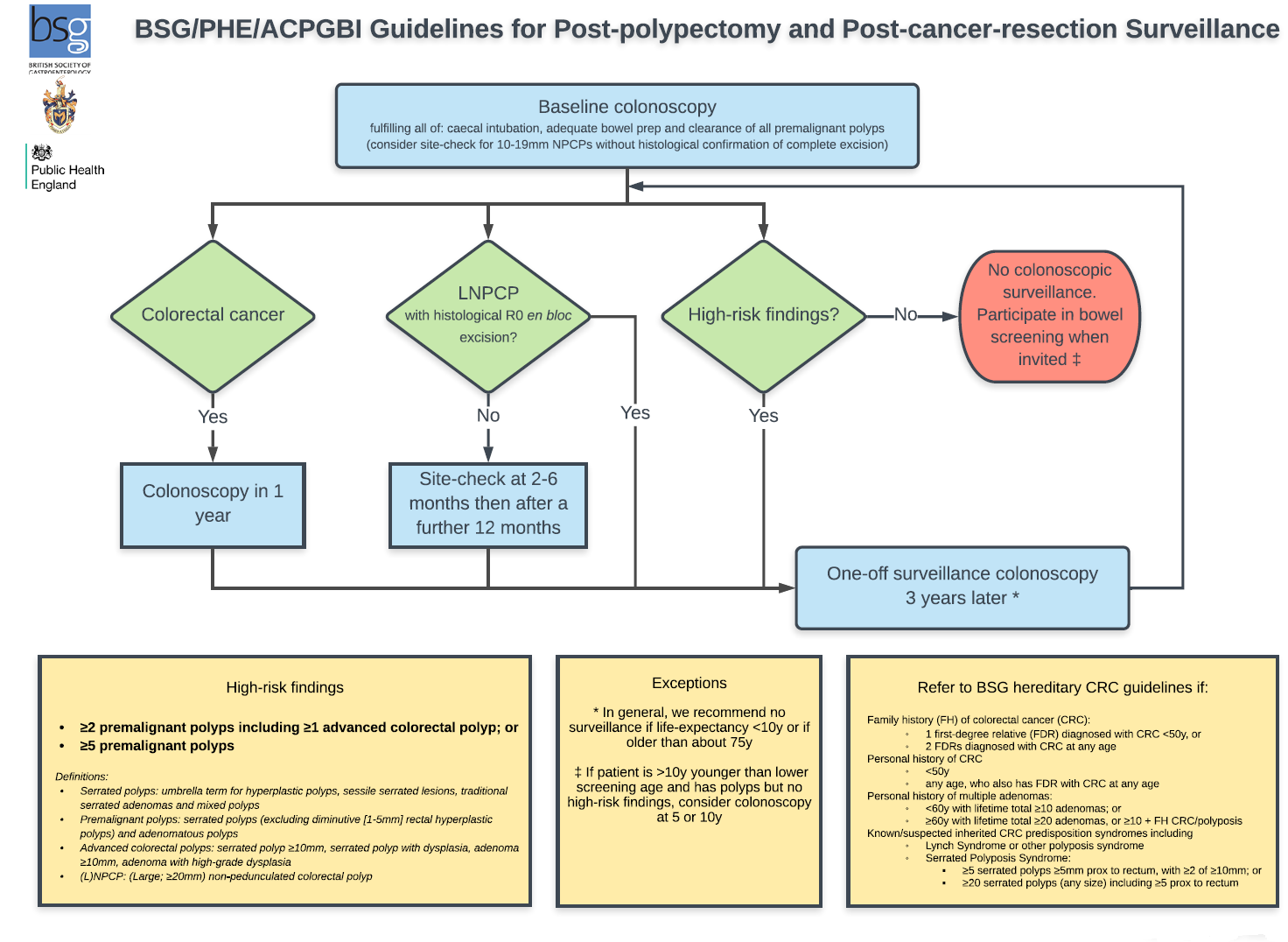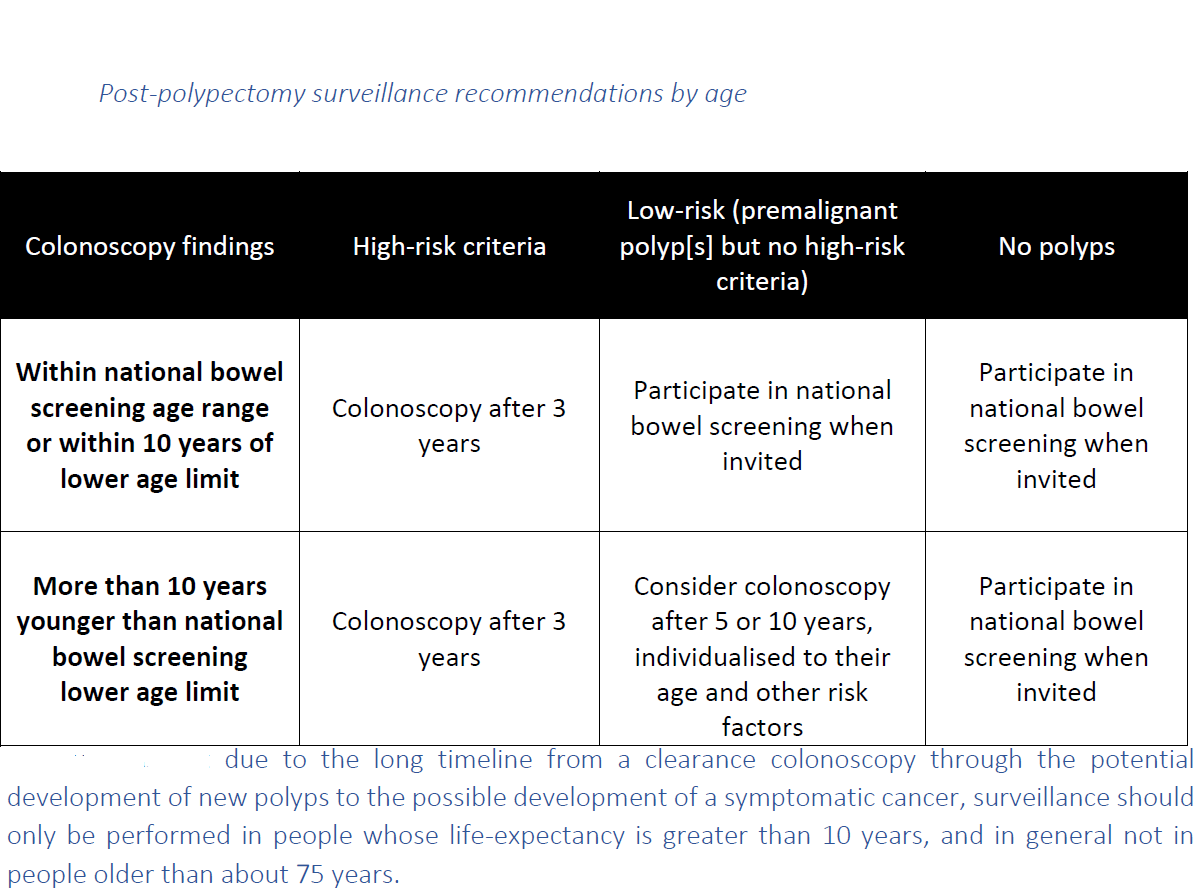Colorectal screening if colonic adenomas
Consensus guidelines have been developed by the British Society of Gastroenterology, the Association of Coloproctology of Great Britain and Ireland and Public Health England (1)
Key recommendations are that the high-risk criteria for future colorectal cancer (CRC) following polypectomy comprise EITHER:
- 2 or more premalignant polyps including at least one advanced colorectal polyp (defined as a serrated polyp of at least 10mm in size or containing any grade of dysplasia, or an adenoma of at least 10mm in size or containing high-grade dysplasia);
- OR
- 5 or more premalignant polyps


Notes:
- a study found that stool-based post-polypectomy surveillance strategies (microsimulation modelling using annual FIT-based surveillance with FOB-gold at a threshold ≥32 μg/g faeces) can be safe and cost-effective, with potential to reduce the number of colonoscopies by up to 41% (2)
Reference:
- BSG/ACPGBI/PHE (September 2019).Post-polypectomy and post-colorectal cancer resection surveillance guidelines.
- Carvalho B et al. Stool-Based Testing for Post-Polypectomy Colorectal Cancer Surveillance Safely Reduces Colonoscopies: The Molecular Stool Testing for Colorectal Cancer Surveillance Study. Gastroenterology. 2024 Aug 30:S0016-5085(24)05402-7.
Related pages
Create an account to add page annotations
Annotations allow you to add information to this page that would be handy to have on hand during a consultation. E.g. a website or number. This information will always show when you visit this page.